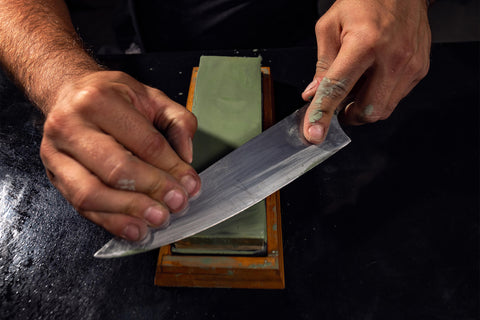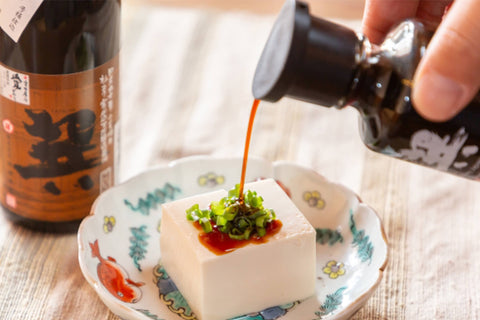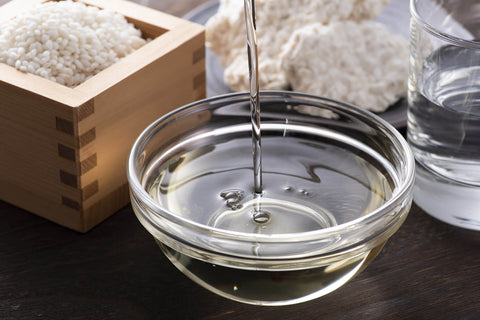
Japanese kitchen knives play a key role in food preparation in Japanese cuisine. Such knives are always manufactured to the highest possible standard, often using traditional blacksmithing methods. There is a wide variety of Japanese kitchen knives, each with its own specific function in the kitchen, and it takes years, if not decades, for a chef to become proficient with all of them.

History
The quality of Japanese kitchen knives owes itself to the sword-makers of Sakai. This region had been the centre of weapons manufacturing since the 14th century, producing beautiful and deadly swords for the samurais and shoguns of feudal Japan. Smiths in Sakai began to produce steel knives during the 16th century, after tobacco was introduced to the country by the Portuguese, with the first knives being used to cut tobacco. Following the Meiji Restoration of 1868, samurai were no longer permitted to carry swords, resulting in a huge drop in work for the country’s swordsmiths. While some manufactured basic swords for the military and others crafted beautiful samurai swords intended for display only, many Sakai sword-makers used their skills to produce knives for the kitchen instead.Distinguishing Japanese Kitchen Knives
There is more to a Japanese kitchen knife than its country of origin. Japanese kitchen knives follow specific rules regarding their design and manufacture. There are four main ways to identify a Japanese kitchen knife:
Handles
The handle of a Japanese kitchen knife tends to be lighter than their Western counterparts, being traditionally made from ho wood. This porous and fine-grained material reduces the chance of the handle splitting and improves the grip. For more decorative handles, some manufacturers use cherry, chestnut, yew, or ebony, though these are more likely to crack if exposed to moisture. The other popular choice for handles is pakkawood – a composite material of hardwood and resin. Japanese kitchen knife handles are usually octagon-shaped, tapering slightly towards the blade, though D-shaped handles are also popular.
Blade Geometry
The major difference between Japanese kitchen knives and Western kitchen knives lies in the design of the blade. Japanese kitchen knife design is focussed solely on the performance of the blade. This often results in the blade being much thinner behind the edge than you might find in their Western equivalent. They have more of a distal taper, offering a cleaner, more precise cut – essential for the delicate preparation required for much Japanese cuisine. They require greater expertise to use effectively, as the chef works with their ingredients to produce the best cuts.
Steel
Japanese kitchen knives are renowned for the quality of their blades. Defining characteristics includes their resistance to breaking, the sharpness and quality of the edge, how easy they are to sharpen, and how well they maintain their edge. Much of the quality lies in the steel used for the blade. There are many varieties of steel that a knife manufacturer may choose from, each with its own properties.
These include:Stainless steel: tougher and less likely to chip than carbon steel.
Powdered steel: contains large carbides that are broken up and sintered together under high temperatures and pressure.
Semi stainless steel: shares properties of carbon and stainless steel, which fall midway between the two.
Tool steel: a heavily-alloyed form of steel – may or may not be stainless.
Carbon steel: usually sharper and harder than stainless steel, but also more brittle and more likely to corrode.
White steel: purified from phosphorus and sulphur contaminates.
Blue steel: purified and alloyed with tungsten and chromium and tungsten for improved toughness and edge retention.
Super blue steel: blue steel, further alloyed with molybdenum, vanadium, and carbon, giving it longer edge life, but making it a little more brittle.
Construction
Japanese kitchen knife blades are either monosteel or laminated. Monosteel blades are constructed in full from the same piece of steel, being either stamped out from sheet metal, or forged from molten steel, using differential hardening or not. They tend to be thinner than laminated blades.
Laminate blades involve a strong core of steel (hagane) sheathed in an outer layer of softer cladding steel (jigane). Using different types of steel in its construction allows talent knife-makers to include the best qualities of both metals, resulting in a blade edge that is easier to sharpen, with a harder core for strength and balance.
Types of Japanese Kitchen Knife
While there are many Japanese kitchen knives available, the standard set comprises a yanagiba, deba, and usuba at the very least, as these are essential in preparing Japanese cuisine.
Gyuto (beef-sword): this knife resembles the traditional Western chef’s knife. The heel of the knife is used for chopping and breaking through stiffer produce such as vegetables, while the tip can be used for making small cuts. For meat, it can be used to saw through using the length of the blade. The gyuto blade slopes from heel to tip, causing the shoulder to raise and the wrist to point down when cutting.Santoku (three-virtues): the santoku is primarily used for fish and vegetables, being flatter than a gyuto, with a less pointy tip. A santoku does not require as much room to cut and is one of the most popular knives in Japanese homes.
Nakiri (vegetable knife): the square tip of the nakiri makes the knife more robust and secure , allowing the user to cut dense products using the tip. A nakiri will often have a blade tilted slightly towards its handle. Not only does this allow for a more comfortable grip, it causes the hand tilt upwards so you use your forearm strength when cutting.
Petty: a smaller knife, used for paring or for cutting smaller produce.
Sujihiki (muscle cutter): a long knife, used to cut meat in a single draw cut.
Hankotsu: a strong, powerful, butchering knife, the hankotsu is used for cutting hanging meat from the bone.
Chukabocho: known as the Chinese chef knife, its short handle and tall, thick blade provide added weight and a higher angle for cutting through denser ingredients, and even bone.
Yanagiba: (willow blade): also known as a shobu-bocho (or sashimi knife), the yanagiba is the most popular knife for cutting fish. A skilled user can perform several cuts that best highlight the various textures of the fish.
Deba: this is a thick knife, used for filleting fish. They are thin enough not to damage the flesh of the fish, but sturdy enough to make it through bones and cartilege. There are several variations of this knife, ranging in size from 120 mm to 210 mm in length.
Usuba: (literally thin blade): this is the thinnest of the three general blades and is used for push cutting. Usuba can come with either a round or a pointed tip.
Kiritsuke: combines the blade length of a yanagiba with the blade height of a usuba and includes an angled tip. Its size and flatness requires considerable skill to control.
Mukimono: this small vegetable knife has an angled tip for decoration work.
Hamokiri: used for cutting the flesh and thin bones of the pike conger.
Magurokiri: used for preparing tuna, it comes into different sizes, depending on whether it is being used for parallel ot perpendicular cuts.
Honesuki: used for deboning chicken, the honesuki has an angled tip for slipping between and severing tendons.
Sobakiri: this knife is used for cutting buckwheat soba noodles.
Unagisaki: this knife is for preparing eels.
Our Suppliers
Here at SushiSushi, we source our Japanese kitchen knives from the most well-respected and established manufacturer in Japan.
Sakai Takayuki
Sakai Takayuki practises the traditional blacksmithing methods of the original Sakai knife-makers, brought up-to-date for optimal efficiency. Their knives are beautifully balanced and designed for use by those new to Japanese cooking, as well as experts.










